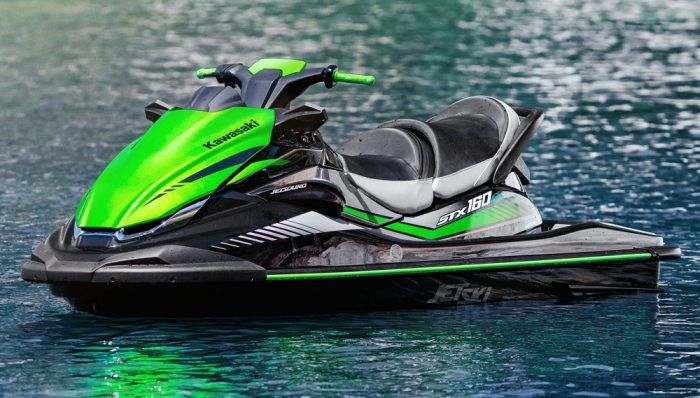
If you are looking to purchase a Kawasaki jet ski cover, you may soon come to find out that there are many different covers on the market, in a variety of different price ranges. Each cover has different features and selling points, which may leave you wondering what factors you need to look for as you look to buy a cover. Here are a few of the key features to consider when you are looking to select the right jet ski cover for your Kawasaki jet ski.
What Material the Cover is Made From
One of the first things that you want to pay close attention to when you are looking to buy a jet ski cover is what material the cover is made from. Jet ski covers can be made from a wide variety of materials, including polyester, cloth, and plastics. A jet ski cover should protect your jet ski from sunlight, acidic bird droppings, tree sap, and flying debris. However, one of the common misconceptions is that a jet ski cover should be waterproof to protect your jet ski from water. Jet skis are designed to go in the water and can withstand rain and moisture, as long as they can drain away. Waterproof covers can trap moisture under the cover, leading to potential water damage to the coat of the jet ski.
If The Cover is Double Stitched and Reinforced
Another factor to consider when buying a jet ski cover is whether the cover is single-stitched or double-stitched and if it is reinforced. A double-stitched cover that features reinforced areas tends to be stronger and last longer. You are going to remove and install the cover over and over, and that can take a toll on the fabric and stitching. Double-stitched and reinforced covers can withstand this wear and tear and hold up to routine usage.
Whether There Are Reflector Strips on the Cover
Having a jet ski cover that has reflector strips, also called reflective strips, sewn into it can be beneficial. There are going to be times when you will be towing your jet ski early in the morning or late at night. If it is on a trailer, someone behind you may not be able to see the jet ski. Reflector strips on the cover help to ensure that the jet ski is visible when it is being towed or if it is being stored. While you can purchase reflective tape and place it on the cover yourself, reflective strips sewn into a cover last longer, won’t bunch up, and won’t fall off if they lose their adhesiveness.
If the Cover Has a Gas Cap Accessible Area
The final factor to consider as you look to purchase a jet ski cover is whether the cover has a gas cap-accessible area. When you are storing your jet ski or towing it, you may need to add gas to it. If your cover does not have an accessible area, you will have to remove the entire cover to add gas to the watercraft. If the cover has a gas cap-accessible area, you simply unzip the area to access your watercraft’s gas cap and fill up the gas tank.
A Kawasaki jet ski cover can be used to cover your jet ski and protect it when it is not in use. The right cover will help to protect your jet ski from sun damage, bird droppings, and flying debris. Pay close attention to what factors differentiate different jet ski covers and then consider each of those factors with what you need in a cover to find the one that best meets your needs.
